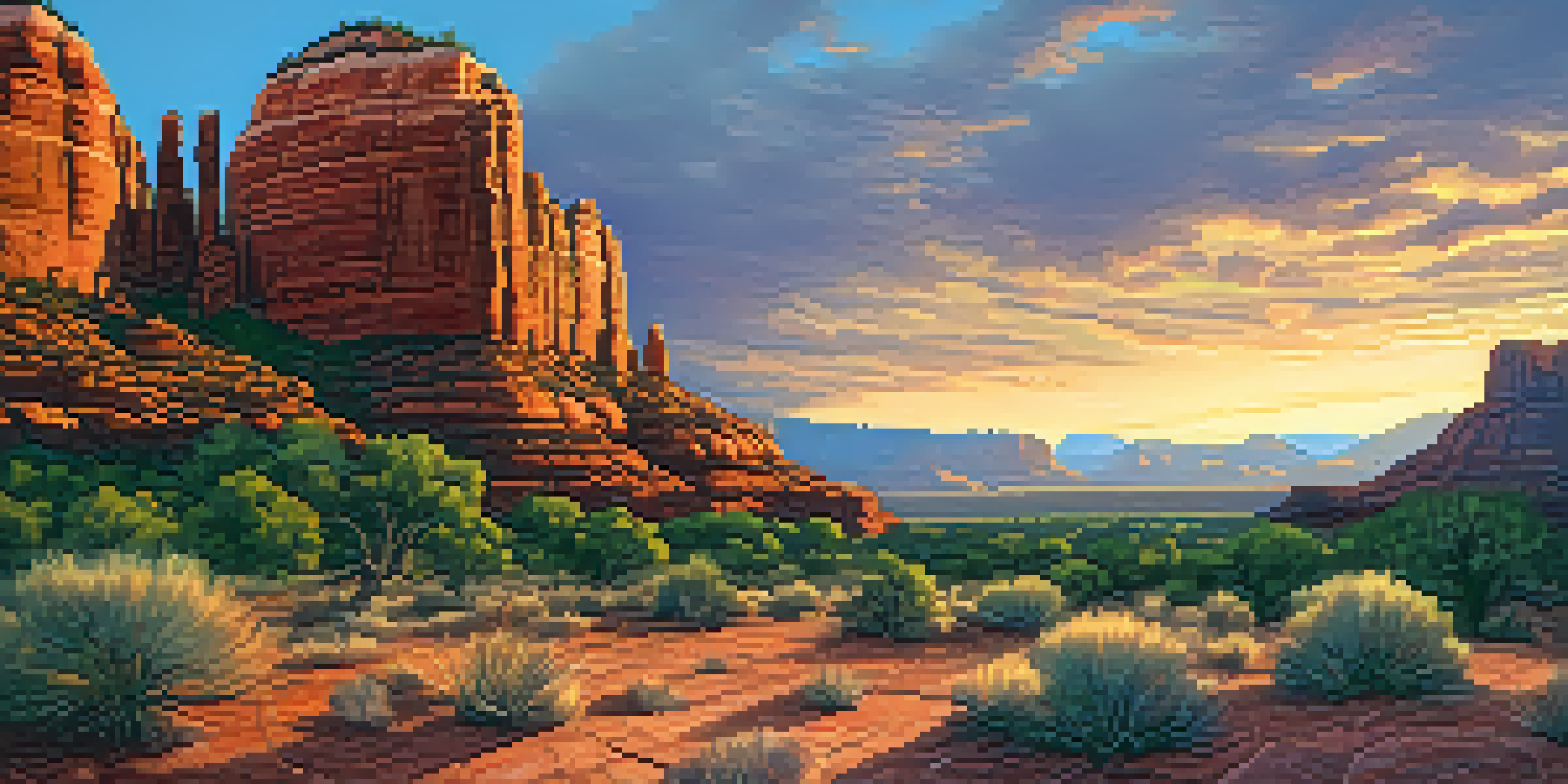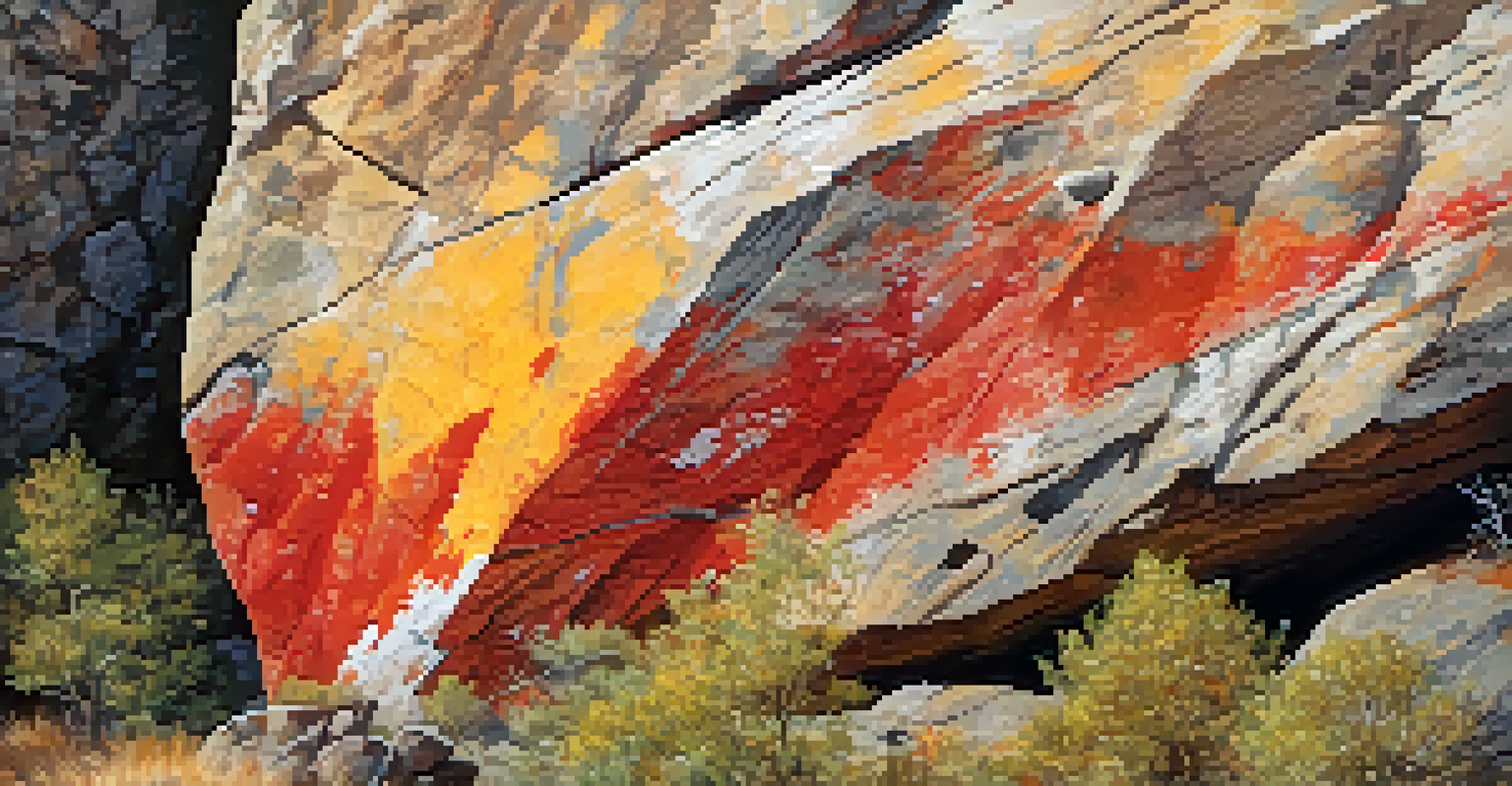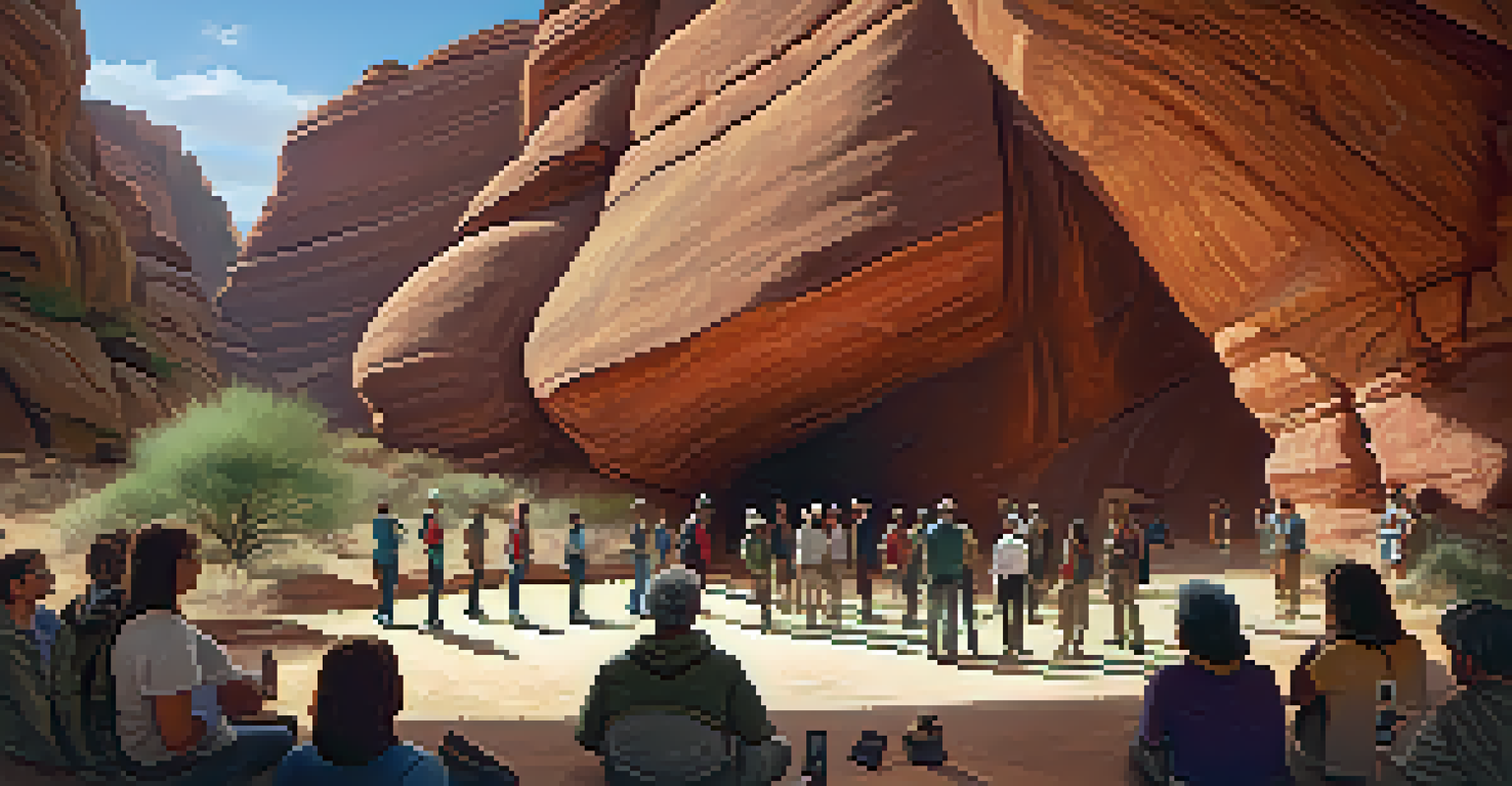Exploring Sedona's Ancient Rock Art: A Cultural Journey

Introduction to Sedona's Ancient Rock Art
Sedona, Arizona, is not just a haven for stunning red rock formations; it also houses a treasure trove of ancient rock art. This art, created by the indigenous peoples of the region, tells stories of their culture, beliefs, and way of life. As you explore Sedona, you’ll find petroglyphs and pictographs that have survived the test of time, offering a glimpse into the past.
Art is the most beautiful of all lies.
The area’s rock art is primarily attributed to the Sinagua culture, who thrived between 600 and 1400 AD. Their artistry reflects a deep connection to the land and a rich spiritual life. Walking among these ancient symbols, one can almost hear the whispers of the past, echoing through the canyons and cliffs.
Visiting these sites is not just about viewing art; it's about understanding the narratives woven into the landscape. Each mark on the rock holds significance, inviting us to engage with the history and culture of those who came before us.
Significance of Rock Art in Indigenous Cultures
Rock art holds immense significance in indigenous cultures, serving as a means of communication, storytelling, and spiritual expression. For the Sinagua people, these images were more than mere decorations; they were vital parts of rituals and ceremonies. They offered insights into their daily lives, including hunting, gathering, and spiritual beliefs.

One popular example is the depiction of animals, which often symbolize strength and agility. These images not only represent the wildlife of the region but also convey the importance of these animals to the Sinagua's survival and spiritual practices. Each piece of art is a testament to their reverence for nature and the interconnectedness of life.
Sedona's Ancient Rock Art Heritage
Sedona's ancient rock art offers profound insights into the culture and beliefs of the Sinagua people, reflecting their deep connection to the land.
Understanding the meaning behind these symbols allows us to appreciate the depth of the Sinagua's relationship with their environment. It reminds us that art is a universal language, transcending time and culture to convey messages of humanity.
Notable Rock Art Sites in Sedona
Sedona is home to several notable rock art sites, each offering unique insights into its ancient inhabitants. One of the most famous sites is the Palatki Heritage Site, where visitors can see well-preserved petroglyphs and cliff dwellings. Guided tours are available, enriching the experience with stories and interpretations from knowledgeable rangers.
The past is never dead. It's not even past.
Another significant location is the Honanki Heritage Site, where rock art showcases both petroglyphs and pictographs. The site is set against a stunning backdrop of red rock cliffs, making it a perfect spot for both history buffs and nature lovers. Here, you can witness the artistry that has stood firm against the elements for centuries.
Exploring these sites not only enhances our understanding of the Sinagua culture but also allows for a deeper connection with the breathtaking landscape of Sedona. Each visit is a reminder of the enduring legacy of those who walked these lands long before us.
Preservation Efforts for Rock Art
Preserving Sedona’s ancient rock art is crucial for future generations to appreciate and learn from. Various organizations and local governments have implemented conservation efforts to protect these irreplaceable sites from vandalism and natural erosion. This includes monitoring visitation, educating the public, and providing guidelines for respectful viewing.
In recent years, there has been a growing awareness of the need to balance tourism with preservation. Visitors are encouraged to tread lightly and follow established paths to minimize their impact on the fragile rock surfaces. This collective responsibility ensures that the stories etched in stone can be shared with generations to come.
Importance of Rock Art Preservation
Protecting Sedona's rock art is essential for future generations, requiring collective efforts to minimize impact and promote respectful viewing.
By participating in these preservation efforts, we can all contribute to safeguarding Sedona’s rich cultural heritage. It’s a way of honoring the past while ensuring that the beauty and history of these sites endure.
The Role of Tourism in Rock Art Awareness
Tourism plays a significant role in raising awareness about Sedona’s rock art and its cultural importance. Many visitors come to Sedona drawn by its natural beauty, but leave with a newfound appreciation for its history. Educational programs and guided tours help bridge the gap between nature and cultural heritage, enriching the visitor experience.
Moreover, responsible tourism can foster a deeper respect for indigenous cultures and their histories. When tourists learn about the significance of rock art, they become advocates for its preservation and protection. This shift in perspective can lead to a more respectful and conscious approach to exploring these ancient sites.
Ultimately, tourism can serve as a powerful tool for cultural education, encouraging visitors to engage thoughtfully with the landscape and its stories. By sharing knowledge, we can create a ripple effect of respect and appreciation for Sedona's rich heritage.
Engaging with Rock Art: Tips for Visitors
If you're planning to explore Sedona’s rock art sites, there are a few tips to enhance your experience. First, consider joining a guided tour to gain insights from experts who can share the cultural significance of what you see. Their stories can bring the rock art to life in ways that a simple visit cannot.
Second, come prepared with a camera and a journal. While photography can help capture the beauty of the art, writing down your impressions can solidify your connection to the experience. Reflecting on what you see and learn can deepen your appreciation for the artistry and history.
Tourism Boosts Cultural Awareness
Responsible tourism in Sedona enhances appreciation for indigenous cultures, encouraging visitors to engage thoughtfully with the region's rich history.
Lastly, always remember to respect the sites. Stay on marked trails, avoid touching the rock art, and follow any posted guidelines. Your mindfulness contributes to the preservation of these cultural treasures for others to enjoy.
Conclusion: A Journey Through Time and Culture
Exploring Sedona’s ancient rock art is more than just a visual journey; it’s an opportunity to connect with the rich tapestry of human history. Each petroglyph and pictograph serves as a reminder of the people who once called this land home. Their stories, beliefs, and artistry continue to resonate, inviting us to engage with the past.
As you walk among these ancient symbols, take a moment to reflect on the enduring nature of art and culture. In a world that often feels fast-paced and disconnected, these rock art sites remind us of our shared humanity and the stories that bind us together.

Whether you're a history enthusiast, a nature lover, or simply seeking a unique experience, Sedona’s rock art offers a captivating glimpse into a world long gone. Embrace the journey, and let the whispers of the past guide your exploration.